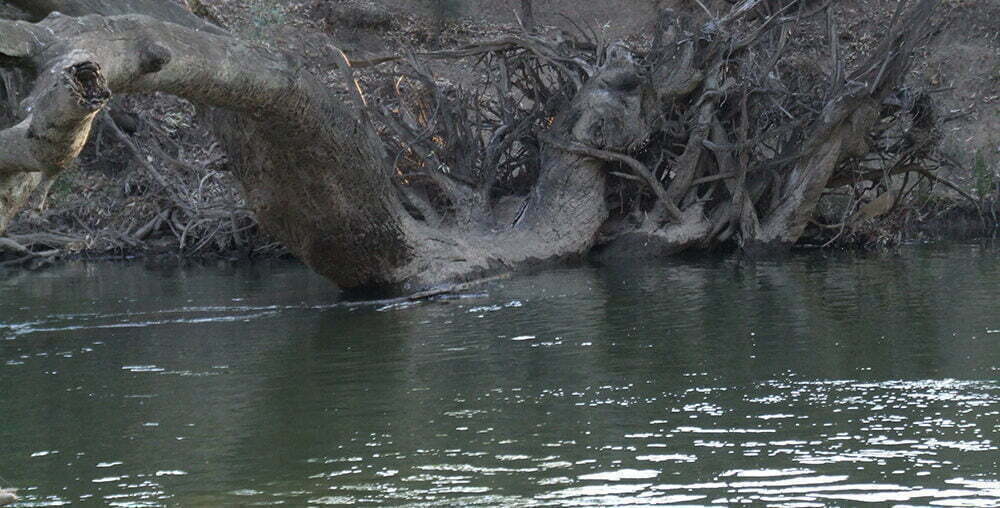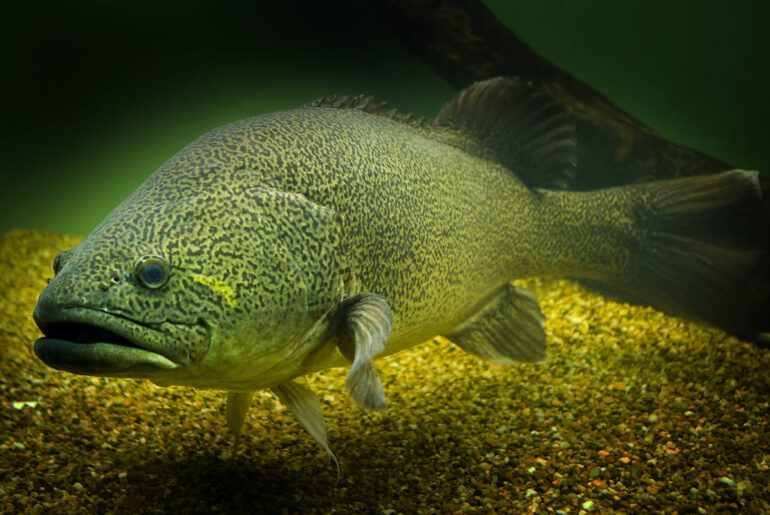Trunks, branches and root masses (known as large woody debris or snags) have a significant role in the species composition, primary production and habitat structure of many freshwater systems. Although the extensive removal of snags from the Basin in the last 150 years is now recognised as a threat to native fish species, whether native fish populations would increase following ‘resnagging’ was not known. The aim of this project was to conduct a scientific trial of resnagging on the Murray River downstream of Yarrawonga and devise a cost-benefit model to assist river managers with future resnagging of large lowland rivers.
Findings:
The results clearly demonstrated that native fish responded positively to the addition of snags. All three native fish targeted: Murray cod (Maccullochella peelii), Trout cod (Macculochella macquariensis) and Golden perch (Macquaria ambigua ambigua) used the resnagged sites within 12 months of the resnagging, and all size classes were represented in those sites. Native fish also responded positively to the density of snags in a site.
The optimal location for snag placements from the bank depended on the target species. If resnagging activities are targeting Murray cod then maximum benefit is likely to be obtained by resnagging within 15m of the bank. Although resnagging this inner area will also deliver benefits for Trout cod, the resnagging of mid river areas will preferentially, but not exclusively, benefit Trout cod in large waterways such as the Murray River. The creation of habitat in depositional zones of meanders had lower rates of use in comparison to other zones.

Two models were developed to allow cost benefit analysis to be undertaken, one that examined cost benefits at the landscape scale and the other at a local scale. The benefits of habitat created through resnagging are influenced by the size of the existing resident population of fish and the extent of connectivity with alternate source populations.
Implications for native fish:
Increased scientific understanding of the importance of snags to native fish and river health has led to significant efforts to reverse the loss of this vital habitat. The most obvious way to achieve this is to put the snags back in. Although conceptually simple, there is a lot of science and engineering behind the replacement of snags. Consideration must be given to the type, size, shape and quantity of snags needed, as well as the position and orientation of each individual snag in the river. This level of detail is necessary to ensure that the structures are placed to maximise the ecological benefits.
Another component of this program has been the establishment of a data set that will provide estimates of the growth rates and population statistics of Murray cod, Trout cod and Golden perch. This has already been used to assist with advancing the management of Murray cod in the Basin.



